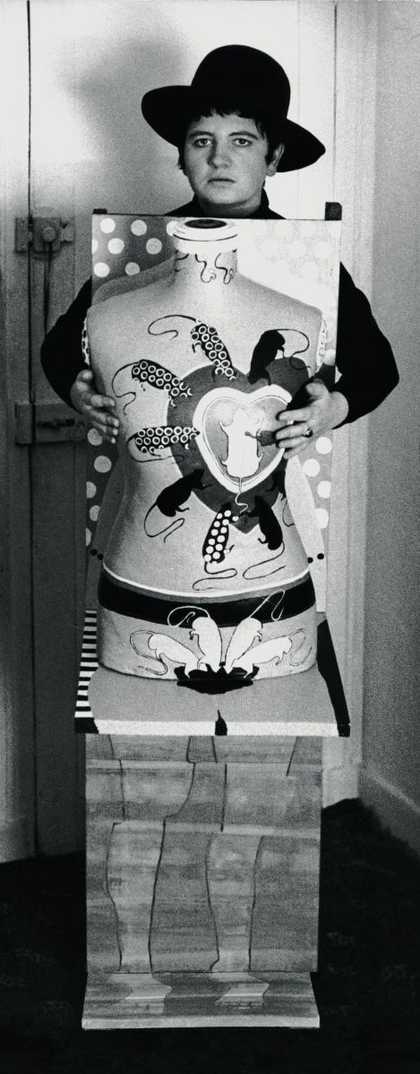Born 1942 in Konstanz, Germany. Lives and works in Berlin.

Ulrike Ottinger with her work Female Mannequin – Legs Under Water in 1966
Courtesy the artist
© Ulrike Ottinger
Mostly known for her avant-garde, transgressive filmmaking practice, Ulrike Ottinger lived in Paris from 1962 to 1968, creating paintings influenced by pop art. Engaging with mass media, Ottinger’s peinture nouvelle, developed in Paris, constituted a meta-discourse on the myths of mass culture by adopting a visual language that was simultaneously influenced by and critical of pop’s aesthetics. Exhibited at the Salon de la Jeune Peinture alongside works by artists of figuration narrative Gérard Fromanger, Öyvind Fahlström, Peter Klasen, Peter Saul, Hervé Télémaque and Eduardo Arroyo, among others, her paintings engaged with the socio-political context of the mid-1960s. Her treatment of images, a superimposition of references from everyday motifs, already suggested a cinematic, montage-like narrative technique.
Emblematic of Ulrike Ottinger’s peinture nouvelle is her triptych God of War 1967–8, which re-appropriates the pop aesthetics of the pinball machine and the traditional artistic genre of religious altar painting. Infused with images directly referencing the Vietnam War as well as political tensions in France leading to the May 1968 events, this work addresses the sacralisation of everyday life in mass-consumption societies, as well as the idea of war as a game, in which players score points by striking various targets. Ottinger’s fragmentary narrative technique is translated into her sculptural work Female Mannequin – Legs under Water 1966, which sequences a female body into three assembled distinctive parts. Immersed in the anthropologic writings of Claude Levi-Strauss, Michel Leiris and Victor Segalen, as well as influenced by her visits to the Musée de l’Homme in Paris, Ottinger infused her work with symbolism found in ethnographic studies. Drinking from the ornamental heart and from the female’s genitalia, the rats here are closely linked to fertile energy. In various civilisations and religions, notably Hinduism, black or white rats represent diverse deities and symbolic characteristics.
Elsa Coustou
September 2015
